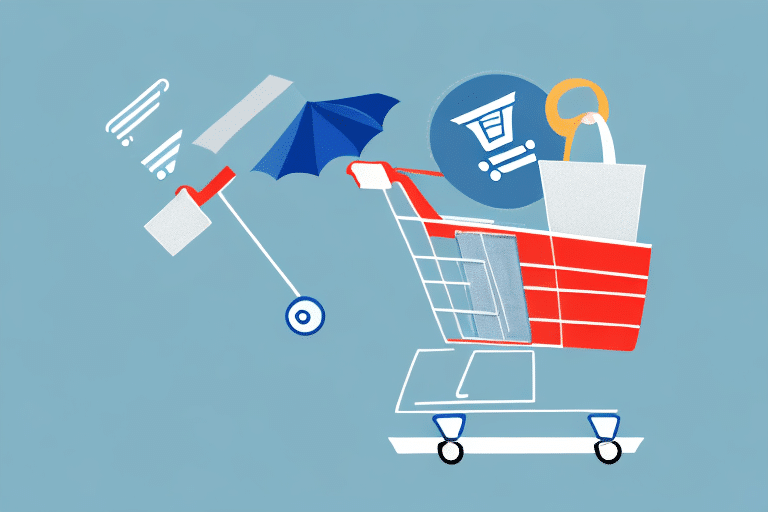5 Essential Ecommerce Cart Abandonment Tools to Increase Your Conversion Rate
The ecommerce landscape has transformed the way people shop, providing unparalleled convenience and a vast selection of products at competitive prices. However, online retailers continually grapple with the challenge of cart abandonment. Cart abandonment occurs when a shopper adds items to their cart but does not complete the purchase. The average cart abandonment rate hovers around 70%, meaning that out of every 10 shoppers who add items to their cart, only 3 finalize their purchase. This represents a substantial loss in potential revenue for any ecommerce business. Fortunately, several cart abandonment tools are available to help address this issue effectively.
Understanding Cart Abandonment in Ecommerce
Cart abandonment tools are designed to help ecommerce businesses recover lost sales by addressing the underlying reasons why shoppers abandon their carts. These tools offer insights into shopper behavior, such as the items left in the cart, the point of abandonment, and the average time spent on a page. By analyzing this data, businesses can identify common reasons for abandonment and implement targeted strategies to mitigate them.
Common Reasons for Cart Abandonment
- Unexpected Shipping Costs: High or undisclosed shipping fees often deter shoppers from completing their purchases.
- Complicated Checkout Process: Lengthy or overly complex checkout procedures can frustrate shoppers, leading them to abandon their carts.
- Lack of Trust: Concerns about payment security or the legitimacy of the website can prevent shoppers from finalizing their purchases.
- Insufficient Product Information: Shoppers may hesitate to buy if they lack detailed information about the product.
- Slow Website Loading Times: Delays in page loading can frustrate users, prompting them to leave the site.
Key Features of Effective Cart Abandonment Tools
When selecting a cart abandonment tool, businesses should consider the following features to ensure optimal performance and effectiveness:
Email Retargeting
Email retargeting involves sending personalized follow-up emails to shoppers who have abandoned their carts. These emails can remind customers of their pending items and offer incentives such as discounts or free shipping to encourage completion of the purchase.
Exit-Intent Popups
Exit-intent popups detect when a shopper is about to leave the site and trigger a popup offering a last-minute incentive to complete the purchase. This could be a discount code, free shipping, or a special offer tailored to the shopper's interests.
Real-Time Notifications
Real-time notifications alert shoppers immediately when they abandon their cart, providing an opportunity for businesses to offer assistance or incentives. This proactive approach can significantly reduce abandonment rates.
Dynamic Remarketing
Dynamic remarketing displays ads to shoppers featuring the specific items they left in their carts while they browse other websites. This keeps the products top-of-mind and increases the likelihood of returning to complete the purchase.
Comprehensive Analytics and Reporting
Effective cart abandonment tools offer robust analytics and reporting features, allowing businesses to track key metrics such as conversion rates, revenue recovered, and the effectiveness of various strategies. This data-driven approach enables continuous optimization of abandonment recovery efforts.
Implementing Email Retargeting Strategies
Email retargeting is one of the most effective methods for recovering lost sales due to cart abandonment. To maximize its effectiveness, consider the following best practices:
- Personalization: Tailor emails based on the shopper's behavior and preferences. For example, include images of the abandoned products and personalized messages.
- Timely Follow-Ups: Send the first email within 24 hours of abandonment to maintain relevance. Follow up with additional emails if necessary.
- Incentives: Offer discounts or free shipping to entice shoppers to return and complete their purchases.
- Clear Call-to-Action: Ensure that emails have a prominent and straightforward call-to-action (CTA) button guiding shoppers to complete their purchase.
Optimizing Checkout Processes to Reduce Abandonment
A streamlined and user-friendly checkout process is crucial in minimizing cart abandonment rates. Here are some strategies to enhance the checkout experience:
Simplify the Checkout Flow
Reduce the number of steps required to complete a purchase. A single-page checkout can significantly lower the chances of abandonment.
Offer Guest Checkout Options
Allowing shoppers to make purchases without creating an account can reduce friction and encourage completion of the purchase.
Provide Multiple Payment Options
Offering a variety of payment methods, including credit cards, digital wallets, and alternative payment solutions, caters to different shopper preferences and increases the likelihood of conversion.
Leveraging Exit-Intent Popups Effectively
Exit-intent popups are a powerful tool for reducing cart abandonment rates. To use them effectively, consider the following:
- Relevant Offers: Present offers that are relevant to the items in the shopper's cart, such as discounts on those specific products.
- Non-Intrusive Design: Ensure that popups are visually appealing without being overly intrusive or disruptive to the shopping experience.
- Clear Messaging: Use concise and compelling language to communicate the value of the offer and encourage immediate action.
Maximizing the Impact of Dynamic Remarketing
Dynamic remarketing can significantly enhance recovery rates by targeting shoppers who have already shown interest in specific products. Here’s how to make the most of it:
Targeted Ad Campaigns
Create ad campaigns that specifically feature the items left in the shopper’s cart. Personalized ads are more likely to resonate with the shopper and prompt a return visit.
Cross-Selling and Upselling
Use dynamic remarketing to showcase related or higher-end products, encouraging shoppers to consider additional purchases or upgrades.
Consistent Branding
Ensure that remarketing ads maintain consistent branding with your website to build trust and recognition.
Offering Incentives and Discounts to Encourage Purchase Completion
Incentives and discounts can effectively motivate shoppers to complete their purchases. Consider implementing the following:
Discount Codes
Provide exclusive discount codes to shoppers who abandon their carts, encouraging them to return and finalize their purchases.
Free Shipping Offers
Offering free shipping can address one of the main reasons for cart abandonment—unexpected shipping costs.
Limited-Time Deals
Create a sense of urgency by offering time-sensitive deals, prompting shoppers to act quickly to take advantage of the offer.
Best Practices for A/B Testing Cart Abandonment Strategies
A/B testing allows businesses to determine which cart abandonment strategies are most effective. Here are some best practices:
- Test One Variable at a Time: Change only one element in each test to accurately identify its impact.
- Use a Large Sample Size: Ensure statistical significance by testing on a sufficiently large group of shoppers.
- Analyze Results Thoroughly: Use the data collected to make informed decisions about which strategies to implement.
- Iterate and Optimize: Continuously test and refine strategies to achieve the best possible results.
Measuring the Success of Your Cart Abandonment Campaigns
Tracking key performance indicators (KPIs) and metrics is essential for evaluating the effectiveness of cart abandonment campaigns. Important metrics include:
- Conversion Rate: The percentage of abandoned carts that are successfully converted into purchases.
- Revenue Recovered: The total amount of lost revenue that is recovered through abandonment recovery efforts.
- Cost per Recovered Sale: The cost associated with recovering each abandoned sale.
- Email Open and Click-Through Rates: Measures the engagement level of email retargeting campaigns.
By regularly monitoring these metrics, businesses can adjust their strategies to improve performance and maximize revenue recovery.
Common Mistakes to Avoid with Cart Abandonment Tools
While cart abandonment tools are powerful, certain mistakes can hinder their effectiveness:
- Being Too Aggressive: Overusing popups and sending too many follow-up emails can annoy shoppers and harm the brand reputation.
- Offering Irrelevant Incentives: Incentives that do not align with the shopper’s interests or the items in their cart are less likely to be effective.
- Failing to Personalize: Generic messages and offers do not resonate as well as personalized communications tailored to individual shopper behaviors.
- Neglecting Mobile Optimization: Ensuring that all cart abandonment strategies are optimized for mobile devices is crucial, as a significant portion of ecommerce traffic comes from mobile users.
Avoiding these common pitfalls and implementing thoughtful, customer-centric strategies will enhance the effectiveness of cart abandonment tools and drive better conversion rates.
Conclusion
Cart abandonment remains a significant challenge for ecommerce businesses, but with the right tools and strategies, it is possible to recover lost sales and boost conversion rates. The five essential cart abandonment tools discussed—email retargeting, exit-intent popups, real-time notifications, dynamic remarketing, and incentives and discounts—provide robust solutions to address this issue. By understanding shopper behavior, personalizing interactions, and continuously measuring and optimizing strategies, ecommerce businesses can effectively reduce cart abandonment rates and enhance their overall revenue performance.




















